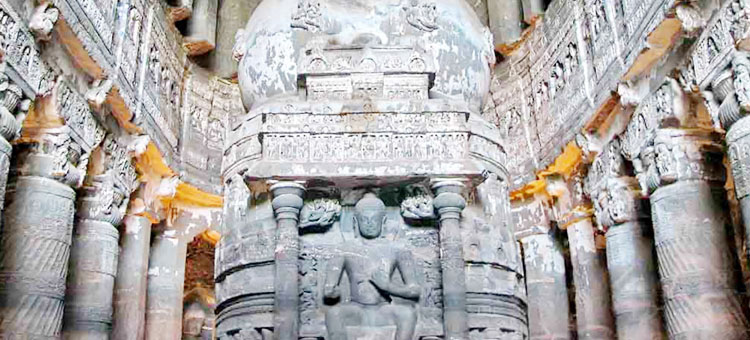Mumbai: With over 500 million practicing Buddhists in the world, Buddhist Tourism offers a great opportunity to grow the foreign tourists arrivals to India. The country is currently welcoming over 3,50,000 foreign Buddhist travellers ever year.
This is because of the fact that the visitation along the Buddhist Circuit suffers from a number of hindrances that prevent the realisation of its tourism potential. The issue was discussed at great length in a panel discussion during the recently concluded Global Exhibition on Services.
The session was moderated by Subhash Goyal, Chairman, STIC Travels. The panel included Satyajeet Rajan, Director General, Ministry of Tourism, Govt. of India; Ekapol Poolpipat, Consul General, The Royal Thai Consulate – General, Mumbai; Ade Sukendar, Consul General, Republic of Indonesia, Mumbai; Sudhanshu Pandey, Joint Secretary, Department of Commerce, Ministry of Commerce and Industry, Govt. of India; V K Gautam, Principle Secretary, Tourism and Cultural Affairs Department, Govt. of Maharashtra.
Pandey said, “Today we have a Buddhist population of about 55 million globally, can we target one per cent of this population visiting India every year, which is roughly about 5.5 million. Connectivity is one of the major issues in India which needs to be addressed. This is where we need to take proactive steps.”
“We need to see how we enhance the experiential component of the Buddhist tourists, because they come with lot of expectations, now if the experience doesn’t match the expectations, actually selling a product at times can be counterproductive. The private players have to offer services, ensure quality of services and that kind of experience with which they bring in the tourist.”
Over the years, the Government has invested in developing the Buddhist Circuit. Still, the funds are very small. The PPP model of investment is very important to grow this segment. The State Tourism needs to work in tandem with the Centre to develop the circuit.
“Many counties have been making investments to the tune of 300-400 crore. We need an investment of at least 5000 crore,” Rajan said.
About the development and investment in Maharashtra, Gautam said that Maharashtra has a very significant connect with Buddhism, and around 90 per cent of the rock cut caves by Buddhists in India is located in Maharashtra.
“We have popular destinations like Ajanta, Ellora, Elephanta, Pithalkhora and Karla, and almost 900 rock cut caves depicting Buddhism. We need to develop this unique segment. For that, new marketing strategies should be chalked out. We are also collaborating with the states of Bihar and UP to create a single Buddhist Golden Circuit for all travellers. Also on the anvil is a golden access from Mumbai-Aurangabad to Nagpur, which will run parallel to our major project called the Samruddhi Corridor as a major highway.”
“We are soon opening a special facilitation centre to promote Buddhist tourism, whereby our stakeholders can approach us and get response. We have large assets in terms of land. We are planning to offer land next to Ajanta cave to investors from other countries to create infrastructure. With JICA and MoT support, we have invested $15 million in creating world-class audio visual centre at Ajanta and Ellora.
On tourism opportunities, Poolpipat said, “Today Buddhism remains the most significant Indian influence in Thailand. This is the strongest spiritual link that connects over 1,00,000 Thais to India every year. This creates a great opportunity for investments in Buddhist tourism infrastructures to bring about better connectivity, which I believe not only attracts more Buddhist visitors but also holiday tourists, both locally and internationally. Thailand continues to play an important role in improving Buddhism in India to further promote Buddhist destination in western India.”






